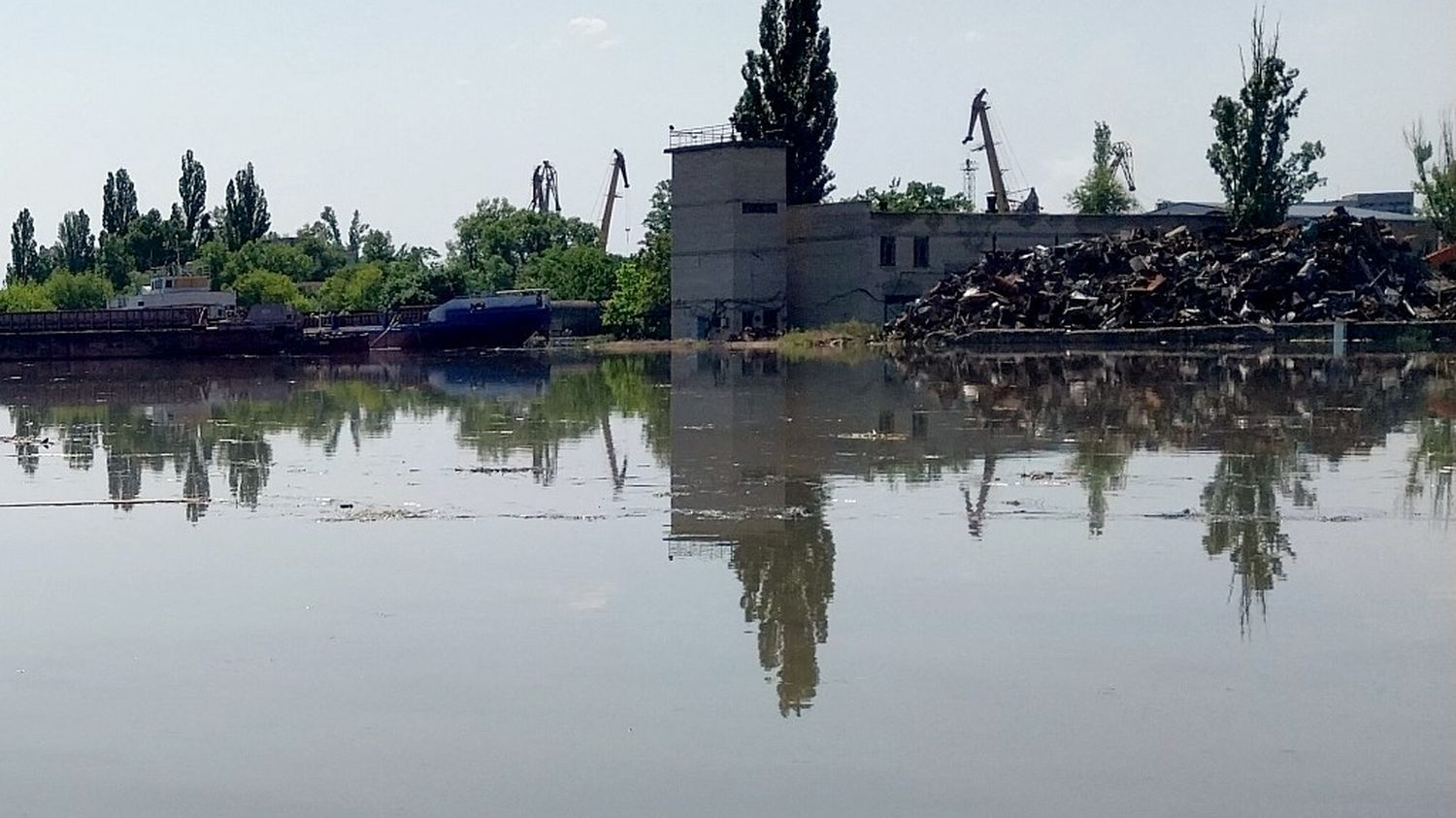Moscow and kyiv accuse each other of the partial destruction of this hydroelectric dam on the Dnipro. All eyes are on Russia, the attack making the Ukrainian counter-offensive more difficult.
Ukraine on Tuesday (6 June) accused Russia of a “war crime” by blowing up the Nova Kakhovka dam overnight on Monday, causing flooding of the banks of the Dnipro, the largest river in Ukraine, in the Kherson region. Russia’s goal, according to kyiv, is to prevent Ukrainian soldiers from crossing the river to carry out their counter-offensive. kyiv and Moscow blame each other for this destruction, but most of the material elements point rather in the direction of Russia.
The threat of a blast already waved by the Russians
There is indeed little doubt about the identity of the perpetrators of the attack on this hydroelectric power station which blocked the Dnipro. Indeed, the complete destruction of the buildings and the water gates, the system that allows the regulation of the flow, certainly required very heavy quantities of explosive. Also, it seems impossible to cause such destruction with a simple artillery bombardment: the structure was therefore properly mined, and only the Russians had the possibility of doing so, their units having access to the dam from the left bank of the river. . The destruction of the Khakovka dam by blasting was, moreover, a threat raised by the Russians as early as last autumn, when the Ukrainian army was gaining ground in the direction of Kherson.
>> Map: where are the potentially flood-prone areas after the destruction of the Kakhovka dam?
The destruction of the dam, and consequently the flooding of the plain downstream to the port of Kherson, makes total sense from a tactical point of view for the Russians. Such a flood will certainly prevent any passage of the river by heavy units of the Ukrainian army, since the Dnipro is several kilometers wide upstream and now downstream. The dam and the road that crossed it were also one of the only access routes to the south of the Kherson region and, further south, to Crimea. An axis that the Ukrainian army could have taken for its great counter-offensive. By flooding the entire area, the Russian army practically prohibited any offensive from Kherson and considerably reinforced its defense of the western flank of the areas it occupied in Ukraine, particularly the Crimea.
Precedents in Kryvyi Rih and during the Battle of kyiv
This is not the first military operation of its kind. Last fall, the Russians had already bombed with cruise missiles and partially destroyed the Kryvyi Rih dam on the Inhoulet River, flooding the plain downstream. The objective was already to slow down the southern advance of the Ukrainian army which was rushing towards Kherson. At the beginning of the war, during the battle of Kiev, the Ukrainians had similarly flooded, by blowing up certain reservoirs on at least one of the tributary rivers of the Dnipro north of Kiev, blocking the advances of troops from Moscow towards the capital. Ukrainian.
There is also an older precedent in the region: in 1941; Stalin had already ordered the blasting of the Zaporijjia dam, a little further north on the Dnipro, to block the way to the German troops who were then invading the USSR. Several thousand Soviet civilians and soldiers had drowned. Since 1949, the destruction of dams has been considered a war crime under international humanitarian law and the laws of war.
